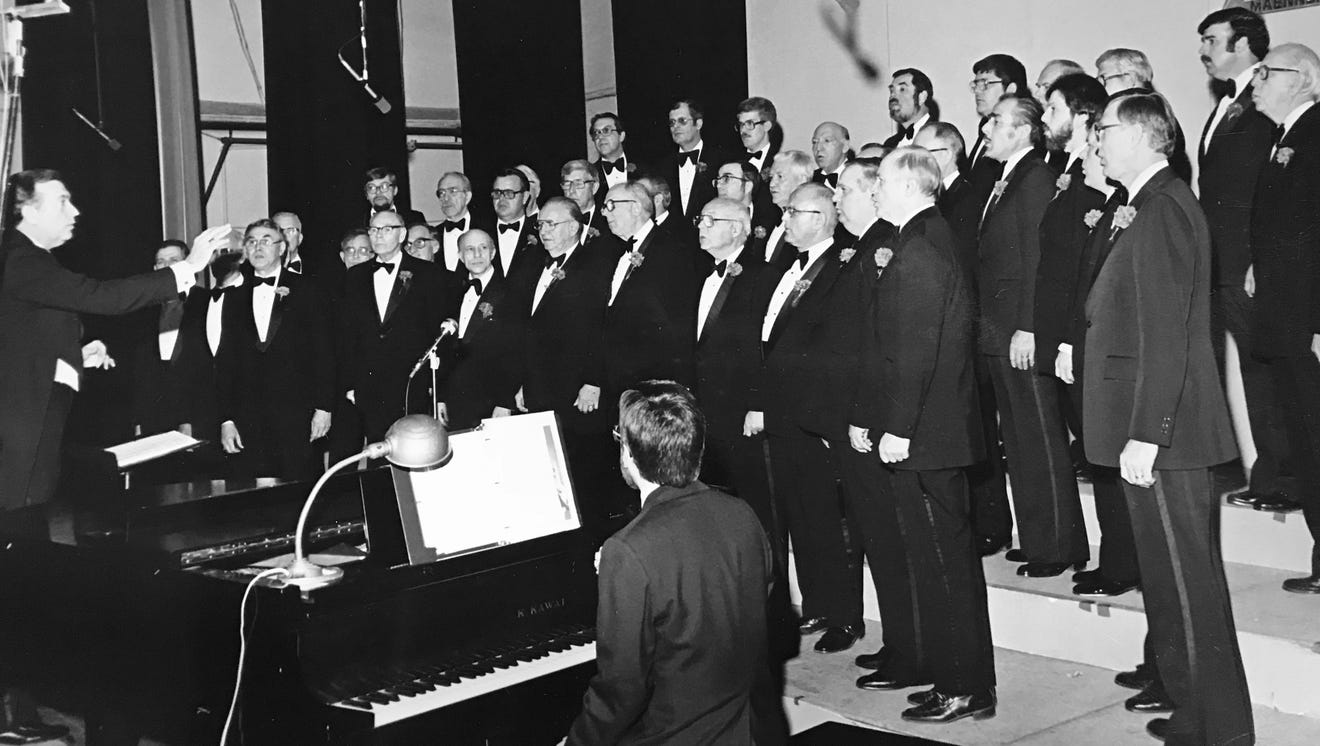The earliest cultivators of “classical” or “serious” music were vocal groups, specifically church choirs and amateur singing societies. One of the earliest choirs belonged to the , which organized a chorus in 1822. Another, the 50-voice Choir, performed publicly with instrumental accompaniment during the 1839-1847 tenure of the church’s famous pastor, .

The Indianapolis Handelian Society, established in 1828, constituted the first of many secular amateur choral organizations formed in the city throughout the 19th century. Organized ca. 1851, the Handel and Haydn Society performed such masterpieces of the choral repertoire as Haydn’s and . The Indianapolis Choral Union introduced Handel’s to Indianapolis audiences in 1874.
German Singing Societies
An influx of German immigrants stimulated the formation of over a thousand Maennerchoere, or male singing societies, across the nation, where they exerted a strong influence upon the musical culture of their communities. Founded in 1854, the Indianapolis remained active until 2018. Its 19th -century musical offerings included choral and instrumental concerts. Moreover, during the 1880s when , who was born in Prussian Silesia, studied organ and piano in Brieg and Breslau, and immigrated to the U.S. in 1849 following the German Revolution of 1848, held the position of conductor, the society staged light opera and operetta productions.
Financier support of the Maennerchor from 1906 to 1933 enabled the organization to import internationally known artists such as Artur Schnabel, the Flonzaley Quartet, Joseph Szigeti, Pablo Casals, and Efrem Zimbalist. In 1867 and again in 1908, the Maennerchor sponsored , or singers’ festivals, of the North American Saengerbund, a large Midwest-based federation of German male singing societies. The 1908 Saengerfest lasted several days and treated concertgoers to choral, symphonic, and operatic selections.
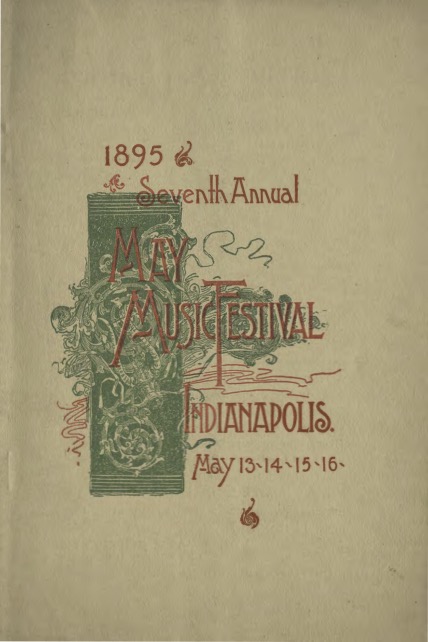
Early Music Festivals
A series of music festivals took place during the last three decades of the 19th century. Patterned after the May Festivals of Cincinnati (themselves based on the German Saengerfest model), initiated by Theodore Thomas in 1873, these events typically lasted several days and featured a number of concerts at which patrons could hear symphonic, choral, and solo vocal works.
The Choral Union and the Philharmonic Society sponsored the first May Festival (1874); the second (1875) was hosted by the Choral Union alone. Because the society performed essentially the same works as they had the previous year, few patrons attended, and plans for further festivals were discarded until the arrival of Carl Barus. In 1886 the organized an “Indiana Music Festival” at to raise money for the construction of the . Barus directed soloist Lilli Lehmann, a festival chorus of 600 singers, and an orchestra of 60 pieces in a performance of Rossini’s . The event proved so successful that a May Music Festival Association was formed to organize future festivals.
Between 1889 and 1898, 10 festivals took place, a foundation of musical excellence having been laid in the early years by Barus, who conducted all the concerts in 1889 and 1890, assisted director Theodore Thomas in 1891, and led the festival chorus performances in 1892. Soloists participating in Indianapolis May Festival concerts in the 1890s included Victor Herbert, Nellie Melba, Madame Nordica, and Emma Fames. Orchestras imported for the events included the Theodore Thomas Orchestra, the Walter Damrosch Orchestra, and the Cincinnati and Boston symphony orchestras. A deficit of $3,000 in 1898 convinced the city that the May Music Festivals had become too expensive to continue, and the Festival Association disbanded.
First Orchestras in the City
The city’s earliest orchestras existed solely to provide singing societies with instrumental accompaniment at choral concerts. The first orchestra to break out of this mold was the Indianapolis Philharmonic Orchestra, created in 1871 for a benefit concert. Composed primarily of German American musicians, the short-lived ensemble performed a series of Sunday concerts before its dispersal.
Karl Schneider, a voice teacher, organized a 60-piece orchestra in 1896. The first Indianapolis orchestra to schedule a complete symphonic work for each of its concerts, the historically important Schneider ensemble stayed together for 10 years. Several other orchestras were formed after the turn of the century. The Indianapolis Symphony Orchestra (a precursor of the present institution) proved to be the most enduring of these organizations. Financially solvent, the orchestra produced seven seasons of concerts between 1911 and 1917. It disbanded in November 1917, when the anti-German sentiment spawned by World War I threatened to endanger its members, many of whom were either German immigrants or could claim recent German ancestry.
Indianapolis Symphony Orchestra
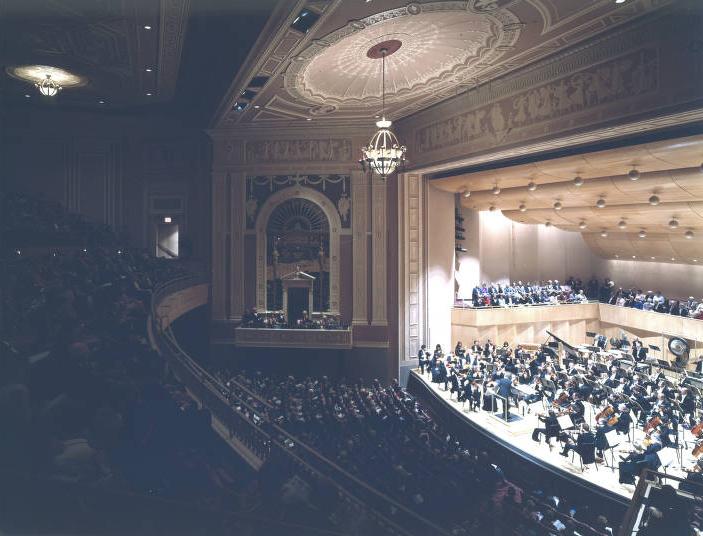
The modern presented its first concert in 1930, under the direction of , the orchestra’s conductor until its eighth season (1937-1938) when took over directorship. Under Sevitzky the ISO earned a reputation for its performances of works by contemporary American composers, its recordings and radio broadcasts, and its neighborhood concert series.
In 1956 replaced Sevitzky; during his 20-year tenure, the orchestra reached new heights of international fame. John Nelson, Solomon’s successor, took the orchestra on tour to Kennedy Center and Carnegie Hall where its concerts achieved critical acclaim. Following Nelson’s retirement in 1987, the internationally renowned conductor-musicologist took over the baton, initiating the ISO’s Promenade Concerts and Midwinter Festivals.
In 1963 the ISO moved from the , where it had presented concerts since its fourth season, to the newly built on the campus. The orchestra made the Hilbert its home in 1984.
Philharmonic Orchestra of Indianapolis
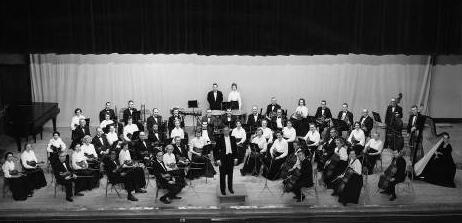
Other orchestras also call Indianapolis home. Founded by ISO percussionist Hermann H. Rinne in October 1940, the embarked upon its concert career in March 1941. Rinne envisioned the community orchestra as a haven for players who wished to maintain a high level of proficiency on their instruments, yet did not have the time or the inclination to pursue a professional music career. The orchestra presents four classical concerts each year at the Pike Performing Arts Center, two free family concerts in the Clowes Auditorium at the , and a free summer concert in . The Philharmonic also participates in advancing arts education throughout the city.
Ensemble Music Society
The , founded in 1944 by Leonard Strauss, is one of the longest continuously running chamber music societies in America. It presents the outstanding ensembles of the world, including the Juilliard, Cleveland, Tokyo, Guameri, Miró, and Kronos string quartets. The society also promotes music education throughout Indianapolis with lectures and demonstrations.
Indianapolis Early Music
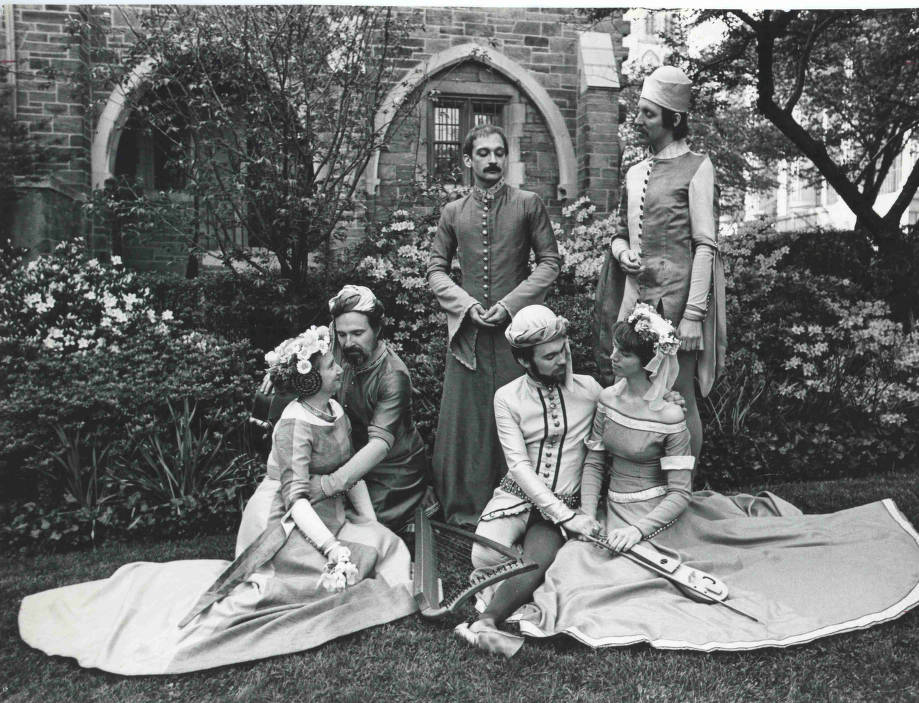
(IEM) has the distinction of being the oldest continuous presenter of early music in the U.S. Originally known as the Festival Music Society, it was established in 1966. IEM presents concerts of music from the Medieval, Renaissance, Baroque, and Classical periods. The annual program, the Indianapolis Early Music Festival, held in Indianapolis during the month of July, usually consists of seven concerts and three lectures. IEM has had a long association with public radio. Selections from IEM performances are broadcast regularly throughout the U.S. and Canada on Performance Today. Indiana University NPR affiliate WFIU also features IEM performances on Harmonia.
Indianapolis Chamber Orchestra
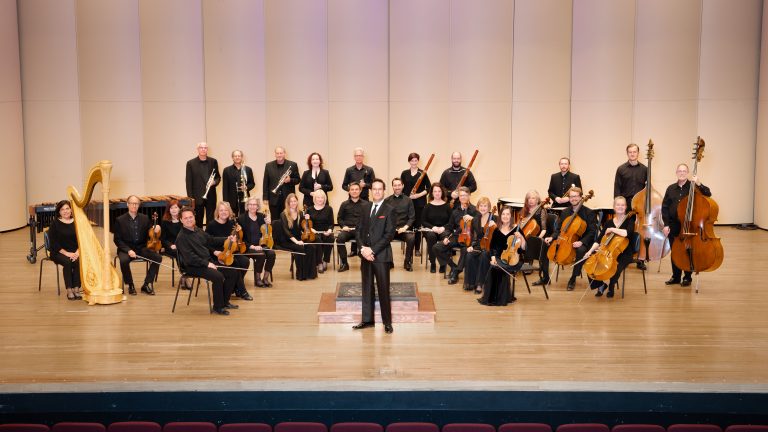
Formed by conductor David Urness in 1984, the (ICO), advances and promotes music composed for the small orchestra through professional concert performance and education programs. Kirk Trevor was music director and conductor for 27 years, from 1987-2015. Indiana native Matthew Kraemer became the third music director and conductor in 2015. The ICO is the orchestra-in-residence at .
IndyBaroque Music
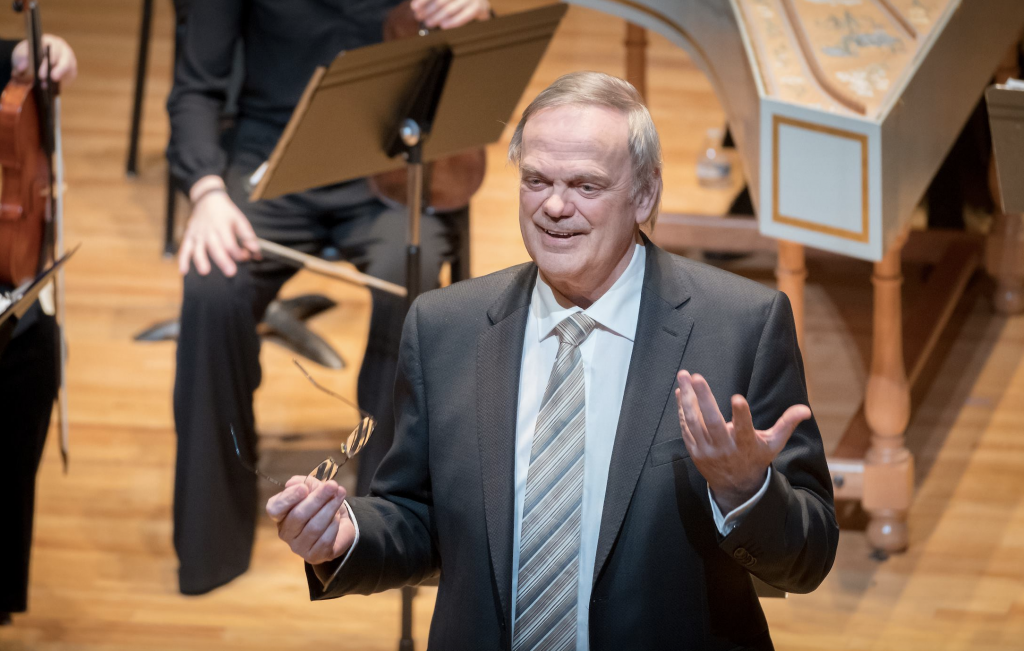
, founded in 1987 as the Ensemble Ouabache (pronounced Wabash), presents performances of Baroque music from the 17th and 18th centuries on period instruments in its annual series in Indianapolis, in guest concerts at other venues, and on CDs. IndyBaroque includes a larger ensemble, the Indianapolis Baroque Orchestra, established in 1995, and a smaller group, the Indy Baroque Chamber Players, formed in 2017. Internationally renowned Baroque flutist and conductor Barthold Kuijken is IndyBaroque’s artistic director. Concerts take place at the Indiana History Center, and at the University of Indianapolis, where the Indianapolis Baroque Orchestra has been ensemble-in-residence since 1999.
Carmel Symphony Orchestra
In 1975 Carmel resident Viktors Ziedonis, a Latvian immigrant, founded the (CSO). The CSO began as a community orchestra with volunteer musicians. The CSO played its first concert in December 1976 with 15 players. It transformed from an all-volunteer ensemble to a “hybrid” of paid professional musicians and unpaid, formally trained artists, a mix unique among contemporary U.S. orchestras. Already by the mid-1990s, the orchestra had over 65 musicians with a music director, general manager, and concertmistress. CSO held most performances in the Carmel High School auditorium. In 2011, it became the orchestra in residence at the at the Center for the Performing Arts in Carmel. Following this move, CSO grew rapidly. In 2017, Janna Hymes became its music director.
Indiana Wind Symphony
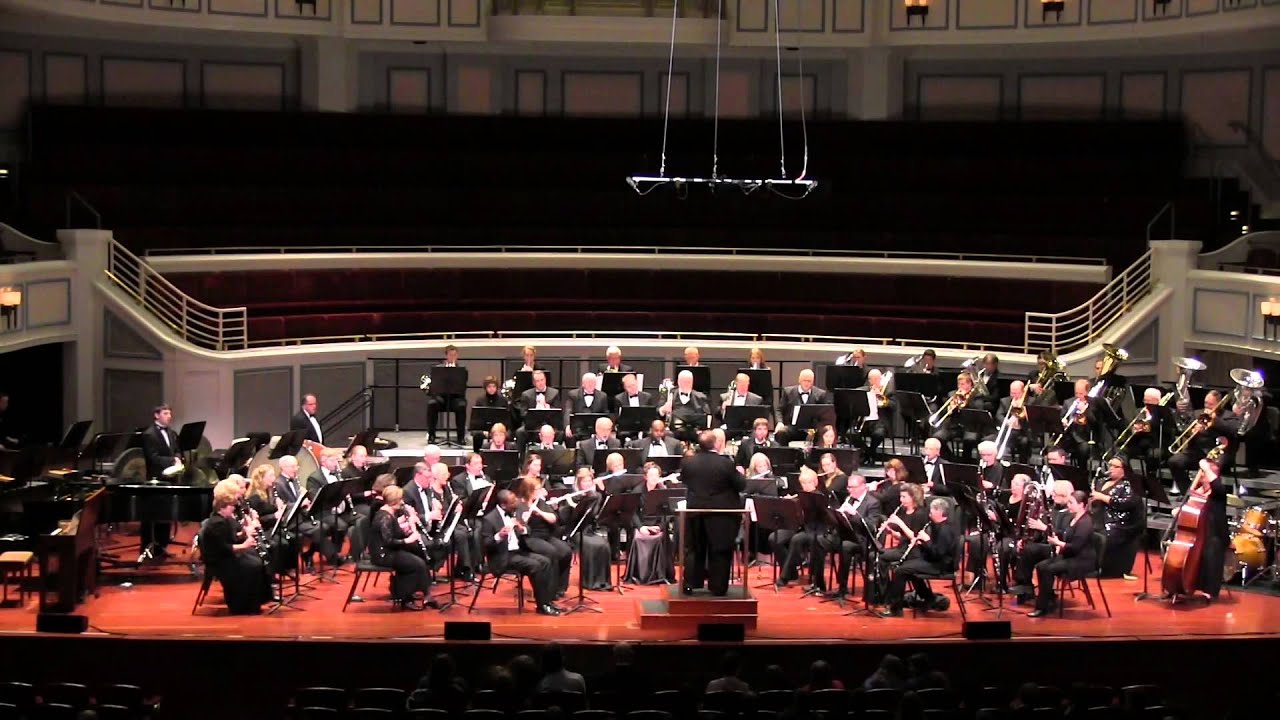
In 1997, Charles P. Conrad established the (IWS), consisting of players of wind, brass, and percussion musicians. IWS became an original resident ensemble at the Palladium at the Center for the Performing Arts in Carmel, along with the . IWS is well-known for its investigation and performance of band music of all styles and time periods. The ensemble has recorded original manuscripts from the John Philip Sousa archives, original works written in 1909 for the centennial of Abraham Lincoln’s birth, and numerous American and World premieres of symphonic wind compositions.
Indianapolis Youth Orchestra
In 1982 Susan Kitterman founded the New World Chamber Orchestra with fewer than 20 musicians. The organization was established to provide aspiring instrumentalists with an orchestral learning environment. The organization held its first Young Artist Competition in 1988. In 1991, Kitterman established a second ensemble, the Indianapolis Youth Orchestra, to accommodate players who were not quite ready to play in the New World. The program moved from North United Methodist Church to Hilbert Circle Theatre in 1993. In 1995, the ensemble had grown to include over 100 members and was renamed the New World Youth Symphony Orchestra. In 2005, the Debut Orchestra was added to create a three-tiered organization. These ensembles were later renamed the Indianapolis Youth, Philharmonic, and Concert orchestras. Founding artistic director, Susan Kitterman, retired in 2015, and Adam Bodony, who participated in New World in his youth, took over as artistic director. For the 2019-2020 season the organization adopted the new name Indianapolis Youth Orchestra.
Indianapolis Symphonic Choir
The (ISC), a 150-member, volunteer chorus that Sevitzky established in 1937, performs masterpieces of choral literature with the ISO each season. In addition, the ISC presents its own performances, educational initiatives, and special events. The choir has appeared in concerts around the world, including Carnegie Hall (2016), and the John F. Kennedy Center for the Performing Arts (2018), with ISO. ISC has a choral Conducting Fellowship, which is a collaborative initiative with Butler University; provides opportunities for side-by-side performance with local high schools and choirs; and commissions work to add to the choral repertoire. The ISC has appeared on national television broadcasts and can be heard on regional radio broadcasts. In 2019, Naxos released a recording of an annual ISC holiday concert, Festival of Choirs, which featured two-time Grammy award-winning soprano Sylvia McNair.
The Christ Church Cathedral Choir
The was formed in 1883 and has since earned an international reputation for musical excellence. The choir was originally comprised of men and boys and was named “The Christ Church Choir of Men and Boys.” In addition to singing at church services, the choir presents an annual concert series at and makes regular appearances with the Indianapolis Symphony Orchestra The choir has made several tours of Great Britain and Europe, appearing at St. Paul’s Cathedral and Westminster Abbey in London, St. Mary’s Cathedral in Edinburgh, the Cathedral of Notre Dame in Paris, St. Mark’s Cathedral in Venice, and St. Peter’s Basilica in Rome. It is the only fully professional church choir in Indianapolis and annually auditions children from around Indianapolis.
Indianapolis Children’s Choir
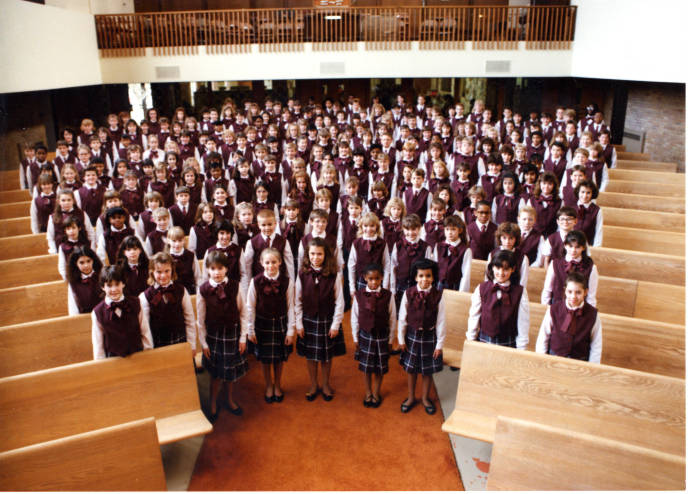
Founded in 1986 by Henry Leck, a Butler University professor of music, the (ICC) is an audition-only group that serves more than 2,500 singers between the ages of 18 months and 18 years of age. Headquartered on the Butler University campus, ICC engages, these children in weekly, in-depth music education. Children who participate in ICC come from over 350 schools and 56 school districts from 20 Indiana counties, including the entire Indianapolis MSA and nearby rural counties. The ICC presents its own 10-concert series at such venues as Hilbert Circle Theatre, , and Clowes Hall.
Indianapolis Opera
Although touring opera companies made frequent visits to the city, few operas gained local production until the late 20th century. (IO) was founded in 1975. IO presents educational, cultural, and community activities to promote opera in Indiana. Throughout its history, the company has produced between two and four operas every season. In 1989, IO established the Indianapolis Opera Ensemble to present short programs to school children. This program reaches 30,000 children and adults each year. In 1997, IO created the Vocal Arts Institute designed for high school students and recent high school graduates.
International Violin Competition of Indianapolis
The quadrennial (IVCI) is one of the most prestigious violin competitions in the world. Cathedral Arts, which was founded in 1969 to promote a variety of arts-related activities, initiated the competition in 1982. IVCI has launched the careers of violinists between the ages of 16 and 29. Forty contestants compete hoping to be named as laureates. Six laureates are designated for each competition. IVCI involves cash prizes that total more than $200,000. The top gold-medal winner performs in a Carnegie Hall recital and plays with major orchestras in North America and Europe. IVCI also sponsors an annual concert series featuring past laureates and works with youth through educational activities.
The Novel Coronavirus (COVID-19) pandemic disrupted the concert seasons of performing arts organizations in 2020.

Help improve this entry
Contribute information, offer corrections, suggest images.
You can also recommend new entries related to this topic.
